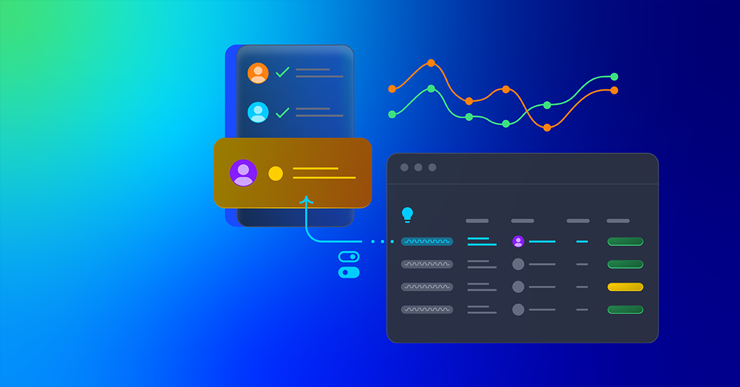Planning your personalization strategy: what to do when nobody knows what to do


Close your eyes. Think of the last time you had to work on a cross-functional team to achieve some kind of common goal.
Okay now open them.
What did you picture? Was it something like this?

This is the cold reality for many cross-functional teams, especially those tasked with implementing a personalization strategy. Nobody knows who’s doing what, or when, or why, or... anything.
In a recent Optimizely study, 36% of executives noted that they’re being held back from implementing personalization due to disjointed workflows.
So, it doesn’t matter how many superheroes and webslingers you have on your team. Without a unified solution to bring everyone together, you’ll excel in nothing but finger-pointing and (if you’re lucky) brightly colored tights.
Here are some tips to get started with planning your personalization strategy.
36% of executives noted that they’re being held back from implementing personalization due to disjointed workflows.
Getting started with personalization
Personalization is a marriage of art and science, and the scientific method starts with defining a problem (actually, it starts with observations, but let’s assume you’ve already observed customer behavior).
For the overwhelming majority of companies, that’s a large enough hurdle to hold them back from personalization. In fact the same study shows just 26% of marketing, ecommerce, and IT executives worldwide have a unified definition of personalization throughout their organization.
How your organization defines personalization will be heavily influenced by what your organization does and who you do it for. Some tips to help you define personalization would be:
- Lead with your personas: You don’t need data to start with personalization, but you do need a clear vision of your ideal customer profiles (ICP). A simple persona exercise will go a long way in defining the personalization journey for your target customers.
- Start with a broad audience: If you are collecting data, you can start by identifying your broadest audiences. This could be as simple as geographic locations or as granular as first-time buyers vs repeat customers.
- Focus on relevant business outcomes: Personalization may be all about delivering the best possible customer experience, but there’s always a business objective attached to each journey. All this effort into personalization is designed to get your customers to take a specific action. What actions do you want specific customers to take?
(Don’t just say “we want them to make a purchase,” because duh).
Your definition of personalization and how to implement should depend on what you want your customers to do at various stages of the buying cycle.
Personalization for your organization might mean providing the most relevant content to your users in order to boost time on site. This is especially true for non-profits and NGOs.
But for ecommerce companies and retailers, personalization might me something completely different. They might want to deliver product recommendations and usher users towards a purchase as quickly as possible.
Stop, collaborate, and listen
Personalization is a true team sport that requires effective coordination between many different departments. Without a centralized solution that allows for collaboration, visualization, ideation, and visibility, it’s basically just going to be one giant Spiderman meme after another.
Before you do anything, you’ll need to ensure you have a shared workspace that allows for cross-functional planning and collaboration.

-
Collaboration
Trying to execute a personalization strategy without a collaboration tool is like trying to do karaoke with your friends to a song you’ve never heard before. Sure, the words are right there in front of you, and the song is playing right behind you, but unless you have Beyonce’s vocal range, it’s going to be really obvious that you don’t know what you’re doing. And in a group setting, one person missing the mark is all it takes to derail the entire operation.
Even if you plan on using a no-code solution, you’ll still need to collaborate between marketing, product, sales, customer success, engineering and solution strategists to ensure your personalization is running smoothly. -
Visualization
There’s often a language barrier within cross-functional teams (and we’re not talking cultural or geographical). Prioritize a platform that allows for agility when it comes to visualization so that each team feels at home when using it.
For example, developers and solution architects may be more accustomed to gantt timelines, whereas content marketers might be more comfortable using a calendar to keep track of their work. -
Ideation
Bringing everyone together into one shared workspace is tough enough, but what happens when everyone starts to add their individual input?
Beyond visualization, your tool should provide a central workspace where ideas are tracked, stored, actioned out, and iterated upon later.
Communication and visualization are key components, but your planning solution should also inspire you. And if it doesn’t, it should (at the very least) make it as easy as possible to jot down your inspiration and easily share it with others. -
Visibility
Speaking of sharing, your strategy is virtually useless if it’s buried in a drive that no one outside of your team has access to. Ensure stakeholders outside of your personalization implementation team can easily digest what’s going on in order to minimize friction.
By adopting a unified platform for the planning phase of personalization, you’ll be able to strategize, develop, and approve personalization campaigns from one single workspace.
Test + Learn: Experimentation
Get your data in order
Remember when we said you don’t need to begin with personalization planning? (It was only a minute or two ago).
Well, at some point, you’re going to need data if you want to really dig deep into providing the personalization experiences all customers expect.
In the aforementioned study, 44% of executives noted that complicated or fragmented data is a top challenge, while about the same amount noted that a lack of effective analytics holds them up. Typically, fragmented data is a result of:
- A patchwork of data solutions cobbled together over periods of time without any sense of strategy
- Loads and loads of unnecessary and irrelevant data being collected
- Poor data management systems
- No one to aggregate and analyze that data into anything that’s actionable
One way to guarantee data won’t be an issue is with a powerful customer data platform (CDP).
Instead of tearing everything down and starting from scratch with your data that’s strewn about countless data warehouses and data clouds, leverage a CDP to keep track of constantly accumulating data. This is especially important for personalization, as you want to ensure you’re surfacing the right data at the right time to the right customers.
A robust CDP can help you get a complete view of your customers and create unlimited audience segments from your data. It acts as the command-and-control hub for your entire operation, streamlining analytics and helping you create campaign strategies to turn your anonymous shoppers into loyal customers.
An effective CDP will provide a holistic view of your customers while automatically creating audience segments. It will also streamline analytics to help you understand what’s slowing down your campaigns.

Mo’ money solutions, mo’ problems
It seems like the more solutions we add to our tech stack, the less we’re able to get done.
It’s because solutions often aren’t built with the idea of integrating easily with other tools, they require routine maintenance, they break often, they weren’t a good fit to begin with, you’re locked into a 10,000-year contract, etc., etc., etc.
Without some technological wizardry, a bloated tech stack is going to slow everything down, which is a big reason why 40% of executives say they have difficulty scaling their program, while 39% noted that they’re struggling to implement personalization in real-time.
Similar to data collection, if you’re relying on a patchwork of disparate systems to execute scaling and implementation, chances are your personalization efforts are being throttled, and that negative experience is being passed onto the customer.
Building a solid framework early will establish the building blocks you’ll need to effectively scale your personalization efforts:
- Creating targeted experiences that drive conversions
- Delivering dynamic experiences in real-time
- Surfacing relevant content to the right users
- Recommending products to the right audience
Recap
Personalization is a team sport that requires careful coordination and a unified vision. Before you even get to the phases where you’re trying to decide how to balance rule-based personalization with AI personalization, or you’re evaluating solutions based on flicker, you need to lay out your strategy and get your team in order. No solution (even one as powerful as Optimizely Personalization) will be able to overcome a lack of cohesion and vision.
If you’re just starting to invest in personalization, or you’re looking to revamp the entire process, it can seem pretty daunting at first. The most important steps are those initial ones you take to ensure you can adequately plan, execute, and refine your personalization strategy.

